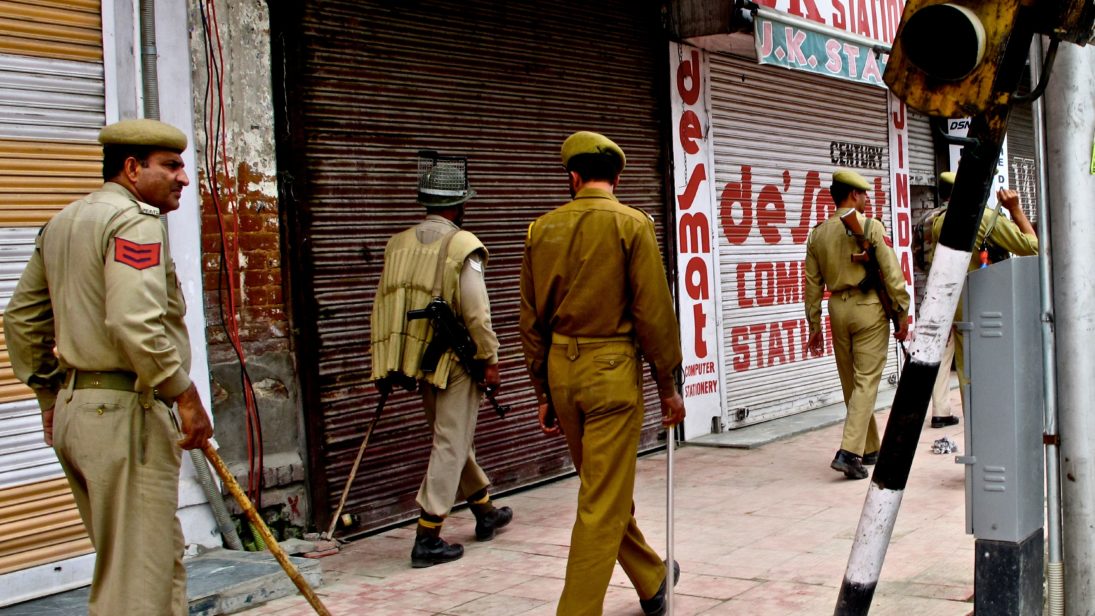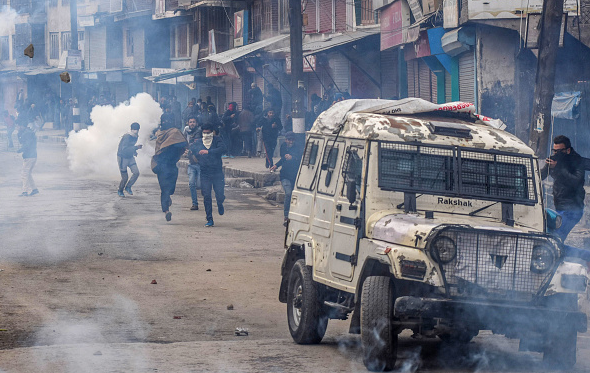
After waiting over a year since Kashmir first began to show signs of unraveling, the government of India appointed former Intelligence Bureau chief Dineshwar Sharma as interlocutor for Jammu and Kashmir last October. Given the Bharatiya Janata Party’s (BJP) hardline stance towards Kashmir, Sharma’s appointment as interlocutor was met with both surprise and skepticism from stakeholders across the Valley. It occurred near the end of 2017 when, even as Prime Minister Modi in his fourth Independence Day speech made the bold pronouncement that the Kashmir issue “cannot be resolved by either bullets or abuses” but by “embracing all Kashmiris,” the government’s harsh counterinsurgency tactics were intensifying. Operation All Out, launched in the summer of 2017 to target and kill known militants across Kashmir, was in full force. Despite this, separatist outfits continued to target security forces at will. The fidayeen attack carried out by Kashmiri militants belonging to Jaish-e-Mohammed (JeM) against the Central Reserve Police Force on the eve of the new year is a grim reminder that force alone will not stop these attacks.
Though the appointment of Sharma sparked some optimism in the Valley, little has been done to address local concerns. If New Delhi is to put an end to the upheaval in Kashmir, the BJP should prioritize long-term conflict resolution over short-term crisis management, harnessing interlocutors like Sharma as a means of pursuing dialogue with all segments of society rather than as a tactic to defuse a period of unrest.
A Histogenesis of Dialogue
When Sharma was appointed interlocutor, his name was added to the long list of intermediaries appointed by New Delhi ostensibly to resolve the Kashmir conflict by bringing separatists and other stakeholders to the negotiating table. Some analysts saw his appointment as a preemptive strategy to ward off any push back from U.S. Secretary of State Rex Tillerson, who was visiting India. The appointment of interlocutors as a tactic for coping with the Kashmir issue traces its origins back to the 1960s, when Prime Minister Nehru appointed Lal Bahadur Shastri to manage tensions following the chaotic events of 1963. Since then, a number of such initiatives have been launched, including a three-member team of interlocutors the central government appointed in response to the 2010 unrest.
Why are most Kashmiris skeptical of these intermediaries, despite the Indian government’s stated commitment to “sustained dialogue”? Separatists from the Hurriyat Conference view India’s appointment of interlocutors as a time-buying tactic aimed at temporarily defusing a period of unrest without making concessions on political issues. The Hurriyat’s apprehensions are not rhetoric, but are grounded in the historical record of previous dialogue initiatives that yielded nothing but disillusionment. The 2010 interlocutors, for instance, published a highly anticipated report after visiting the state and meeting with relevant stakeholders. However, their findings were ultimately dismissed by policymakers, much to the dismay of Kashmiris throughout the Valley. If the BJP government in Delhi does not alter its indifferent approach to local concerns and political aspirations, they will only further alienate Kashmiris.

Decoupling Kashmir
At first, Sharma appeared eager to talk to all stakeholders in Kashmir, including separatists. He even managed to meet with a pro-dialogue separatist leader, Professor Abdul Ghani Bhat, on one of his recent visits. Still, little else has changed on the ground. During previous dialogues, New Delhi would create an environment amenable to dialogue by releasing political prisoners, reviewing the cases of detainees under the Public Safety Act, and allowing the Hurriyat to hold public meetings. This time, however, separatist leaders were periodically placed under house arrest, raids by the National Investigation Agency (NIA) did not cease, and other political prisoners were not released. Given these conditions, Sharma’s appointment did not generate much hope in the Valley.
After being appointed, Sharma initially attempted to reach out to the Hurriyat to engage them in dialogue, but they refused to speak with him. However, according to a former security official who did not wish to be named, Sharma was later advised by New Delhi not to approach separatist leadership. Instead, they counselled that he should let separatists come to him. Through this communication to Sharma, New Delhi wished to signal that mainstream political parties—who separatists contend do not credibly represent the people of Kashmir—are the only relevant stakeholders. An irrelevant Hurriyat, in India’s eyes, would help New Delhi “decouple” the Kashmir issue from Pakistan, after which Kashmiris will no longer be a third party in the bilateral dispute between India and Pakistan. However, unless the central government manages to satisfy the longstanding political aspirations of locals, this tactic is unlikely to achieve India’s desired outcome.
Sharma’s Herculean Task
Sharma now has a herculean task of navigating the politics in the Valley. It will be difficult enough to convince the Hurriyat to come to the negotiating table, as many see Sharma’s mission as a non-starter without parallel talks with Pakistan. Still, it will be even more challenging for Sharma to persuade the hawkish BJP, which is part of the coalition government with the centrist People’s Democratic Party (PDP) and opposes any concession being given to the Hurriyat, to do the same. To complicate matters further, the BJP and the PDP remain at odds regarding Sharma’s mandate. The PDP would like any talks to be extended to Pakistan, a proposal that was earlier accepted by the BJP under the Agenda for Alliance, a document signed between the BJP and PDP in March of 2015. But, even if Sharma can achieve all this, how will Pakistan react? Without a parallel dialogue initiative with Pakistan like those of the Atal Behari Vajpayee and Manmohan Singh governments, it seems unlikely Sharma will be able to prevent Pakistan from spoiling the peace process.
Meanwhile, the situation in Kashmir is becoming all the more dire. Though New Delhi seems to have exhausted all its options in Kashmir—from harsh measures like NIA raids to sponsoring national tours for the youth and cricket tournaments—2017 nevertheless saw a steady increase in the number of young Kashmiri boys resorting to militancy. Most of these young men are from well-educated, upper middle-class families, yet they continue to take up arms with conviction. The driving force behind this swell in militant recruits is the closing of a political window to the Kashmir issue.
The Way Forward
Given the level of cynicism prevailing in Kashmir over the politics of interlocutors, it is unlikely that any breakthrough is possible without extending an olive branch to Pakistan. Whether New Delhi likes it or not, Islamabad does have some control over some aspects of the Kashmir conflict, as there remains a segment of the people who do look towards Pakistan. India can get the most from Pakistan by engagement rather than by confrontation, and with the Trump administration exerting pressure on Pakistan to rein in militants operating on its soil, New Delhi should seize this opportunity for cooperative involvement with Islamabad. This would be an apt beginning towards a formal ceasefire along the Line of Control (LoC) and a long-term resolution to the Kashmir issue.
***
Image 1: Austin Yoder via Flickr
Image 2: Yawar Nazir via Getty


